(note: written Friday afternoon, published now for lack of internet)
Hey there. It’s been awhile.
I’m currently in a paradise called Chapod, a 7-hour bus ride south from Santiago. My host mom, Clorinda, is washing dishes. My host father, Octavio, just put on his Yankees hat to go outside and check on the piglets and chickens and lambs that roam free on their small property. In an hour or so, the Chile-Colombia World Cup selection game will start, meaning that the entire family—Clorinda, Octavio, daughter Gemima (Gemi), and son Patricio (Pato)—will gather around the rabbit-eared television and probably drink some mate and eat a little pancito. I don’t know how this sounds to you, but, to me, this is the best way I could ask to spend a Friday night. I wish that I could begin to explain the lifestyle that I’ve learned over the past week here in Chapod, but I could probably write for hours—and nobody wants that. So here is a brief summary:
1. Mapuche: The largest indigenous group in Chile. The Mapuche people put up the longest resistance to Spanish rule (hundreds of years), and actually succeeded in gaining recognition for its borders from los conquistadores. But then independence happened, and also Pinochet, meaning that the Mapuches have been oppressed and repressed for hundreds of years under the Chilean government. They have been stripped of their land, the right to their own language, the right to their own nation and identity. They live in poverty in discrimination, and their culture is in great danger of extinction due to the loss of language and the spread of Evangelical Christianity. The Mapuches live in harmony with the land, believing themselves to be a part of this Earth, rather than its rulers. And yet, they are losing the nature that surrounds them due to the tree farms and hydroelectric plants that have flocked to the region.
Palin, the Mapuche version of field hockey.
2. Mate: Dad, this is not pronounced like the Australian term for friend. Mah-tay is a kind of tea, and I’m sure it has a long history and a long explanation about what it really is made out of, but all I know is that you pack it into a large mug and drink from a metal straw that filters out the leaves. Each time you’d like to take a drink, you fill the mug to the brim with just-boiling water (about 4 sips worth), then refill to pass it to the next person. This requires sitting together, probably in a circle around a table, until you’ve gone through an entire teapot full of water: which means that you really get to know the people you’re with. My host parents are in their 60s and 70s, and participate in this mate ritual 2 to 3 times per day: it’s adorable watching them sit together around the wood-fired stove (the only source of heat in the house) and pass the cup to each other in silence. There is a familial closeness here in el campo (the countryside) that is irreproducible in the hectic, competitive world of the United States.
3. Pan: In other words, bread. There is literally always pan available, and it is always fresh-baked in a wood-fired oven. The only incentive for me to climb out of my warm bed every morning is to eat pan slathered in homemade strawberry preserves and cheese; every evening, my roommate and I walk home quickly in hopes that it will be waiting for us on the table. That being said, a favorite topic of conversation this week has revolved around how much weight we’ve all gained since arriving to Chile. Other foods that have to do with this topic:
Calzones rotos –My host mother takes the same dough she uses to make pan, forms pretzel-like shapes, and pops them into boiling oil. Essentially, we eat funnel cake for breakfast and dinner.
Tortilla – The same dough used to make pan, but baked over an open fire.
Sopaipilla – The same dough used to make pan, but made into small flat pancakes…and popped into boiling oil. Essentially, we eat doughnuts for breakfast and dinner.
Sopaipilla in process.
Learning from the expert.
Our finished product–actually, I’ve got to admit, it was better than our host mom’s, and she’s been doing this for 60 years now.
4. Machetes: Yes, mom, I used one. Our group helped to build a ruka behind the local elementary school (in other words, the traditional home of los Mapuches, now used mainly for cultural education and tourist purposes). This required cutting bamboo (coligüe) on our host family’s property using machetes and handsaws. Also, I’m proud to be one of the only members of our group who could successfully hammer in a nail (thank you, Daddy).
5. Culture: At a school visit yesterday, a high school student asked me, “Is there culture in your country?” I had no idea how to respond. In my mind, the United States does not have a single, unified culture: life on the East Coast is different from life on the Best Coast, just as life in Northern California is distinctly different from life in Southern California, just as Carmel is different from Monterey. Culture is constantly changing, influenced by other cultures and global events and general generational change: it is not static or immutable or, in my mind, definable. And yet, one of our cultural guides for this week gave us a list of four key parts of Mapuche culture: religion/spirituality, Mapuche history, the Mapudungun language, and the sense of connection to the land. Without these, according to Don Juan, one cannot continue to be Mapuche. But, if that is the case, how can the community of Chapod, which is almost entirely Evangelical Christian, also be Mapuche? Can those who move to Santiago still call themselves Mapuche? And who, really, has the right to say that certain parts of a culture can change, whereas others cannot? What is “good” or “bad” within a culture? The Mapuche culture is in danger of being lost forever, or at the very least falling into the trap of folkloricized tourism. We’ve visited school after school attempting to come to the rescue through various intercultural education programs. But time passes. How can we stop the world from turning? Who has the authority to stop it? I don’t have the answers. I’ve never really paused to think about the importance of culture before. But, food for thought.
6. Bucket showers: I took one. And while I took one, the largest spider I’ve ever seen stared at me from behind a hose. Living in el campo is not glamorous. Our bathroom is essentially an outhouse without a light, meaning that I can’t see what bugs or spiders are hiding behind the toilet. Sometimes, the power shuts off. Every morning, I brush aside chickens and roosters to walk out the front door. I don’t want to be “that girl” who says that living with less finally taught me some lesson about humility or nature or something like that, but…it happens. When I took a shower, my host mother filled a single bucket with warm water, and I felt as though it wouldn’t be nearly enough—it would fill maybe a fifth of a bathtub. And yet, I used about a fifth of the bucket. I’ll probably get back to Santiago and take a lengthy hot shower after this week is over, but still: we can all make do with less.
And, as I write this, I want to make sure to not stereotype life in el campo as bucket showers, or outdoor bathrooms, or bugs, or farm animals. Because life in el campo is much more than that. It is family values. It is vast expanses of land, a perfect blend of California eucalyptus and North Carolina forested hills. It is church on Sundays and no alcohol and learning how to make Mapuche ceramics in indigenous language class. It is hot tea and coffee, and a struggle to blend the life of the city of Temuco with the tranquility of pastures and rivers. And it is changing, rapidly, as the world continues to globalize.
Host family from left: Patricio (Pato), Octavio, Andrea, me, Clorinda, Belen, Gemi, Dalary, y Lloli.
I realize that this is the longest blog post I’ve posted thus far, and it does not even mention my weekend in Valparaiso (picture San Francisco + European cobblestone streets), or my week observing classes in El Colegio de Niñas Benjamin Vicuña MacKenna. Apologies for my inability to be concise.
But get ready for another long one once I get back from Buenos Aires.

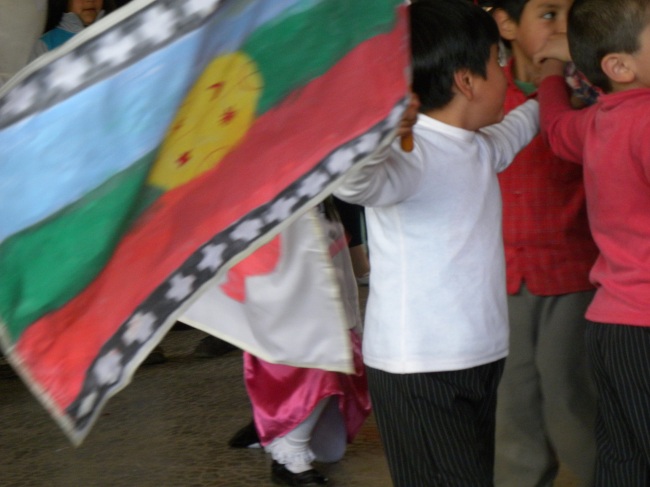
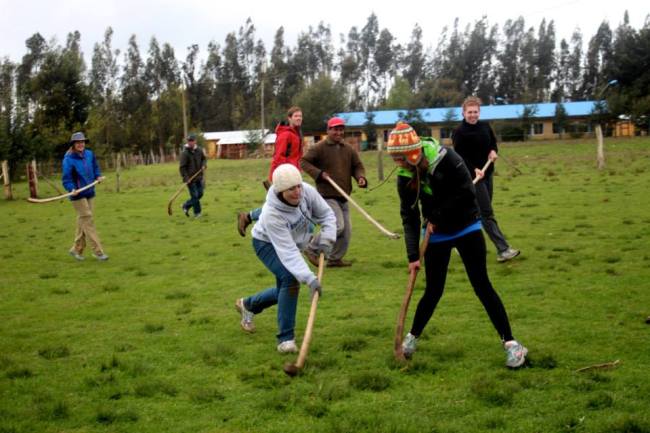

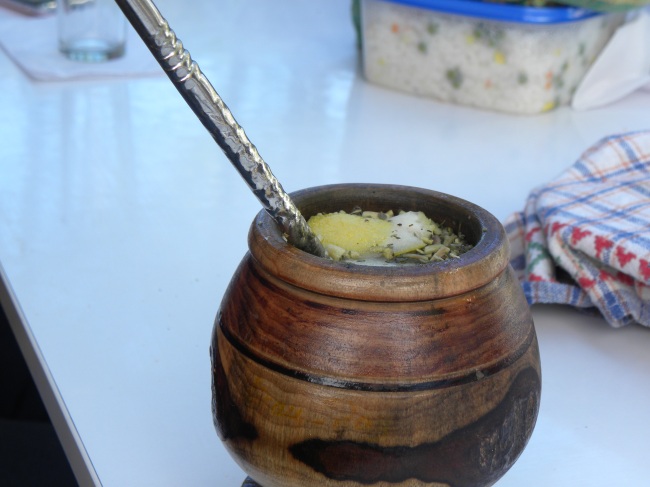

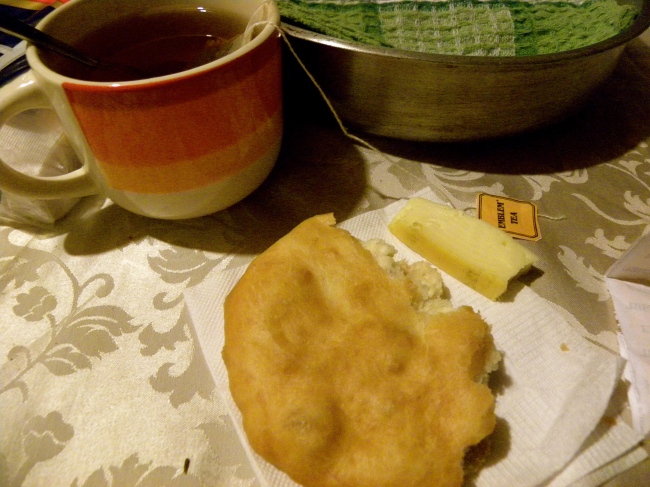



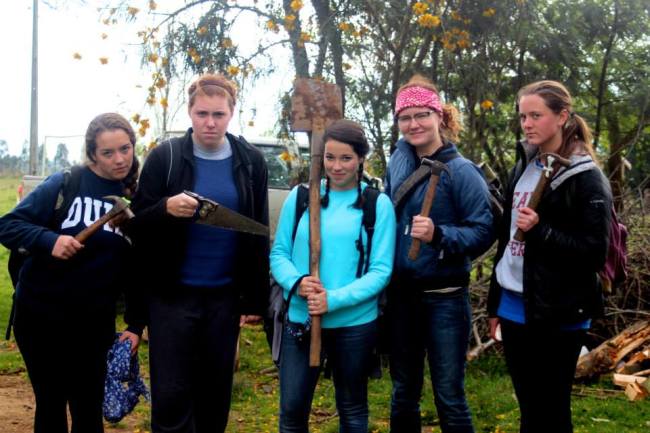
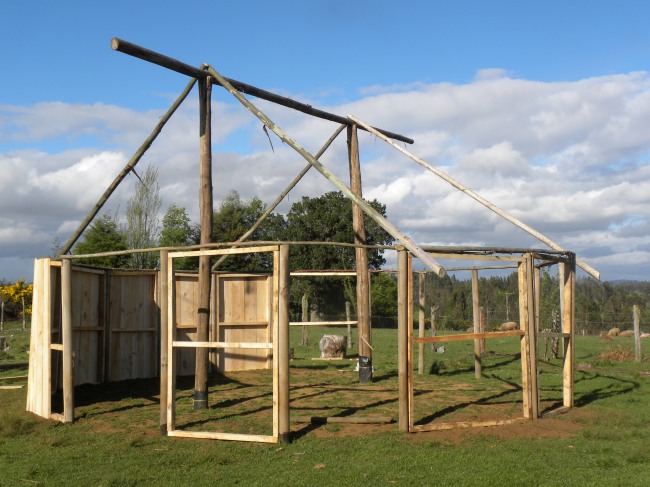
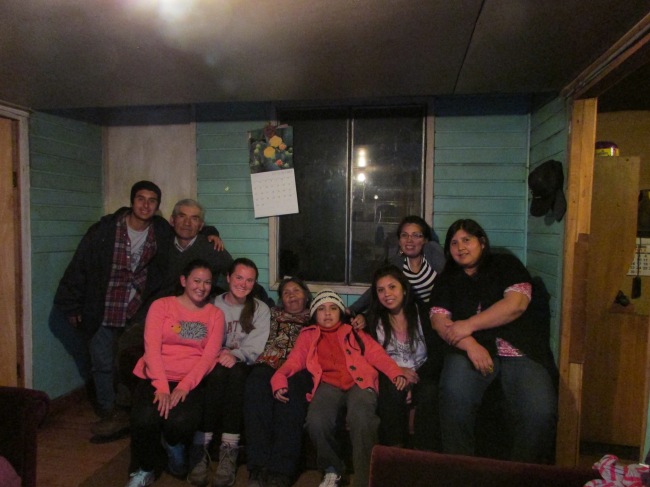
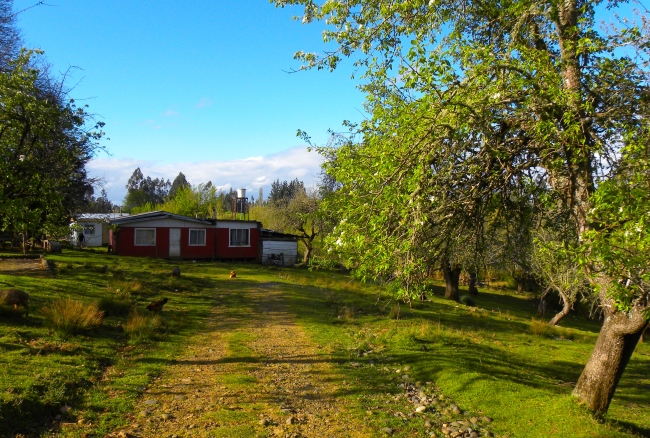
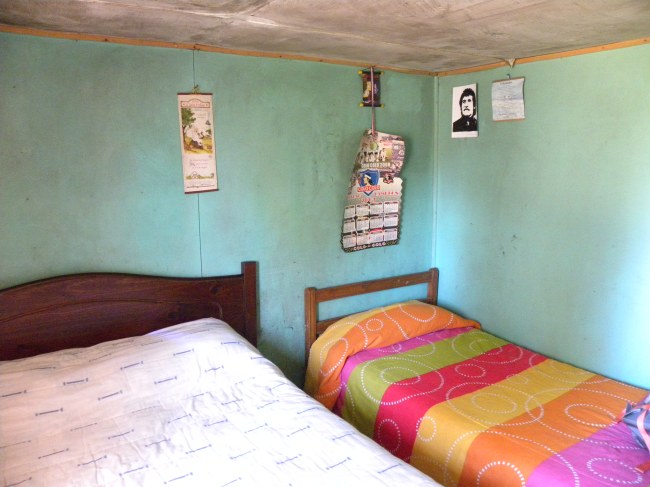
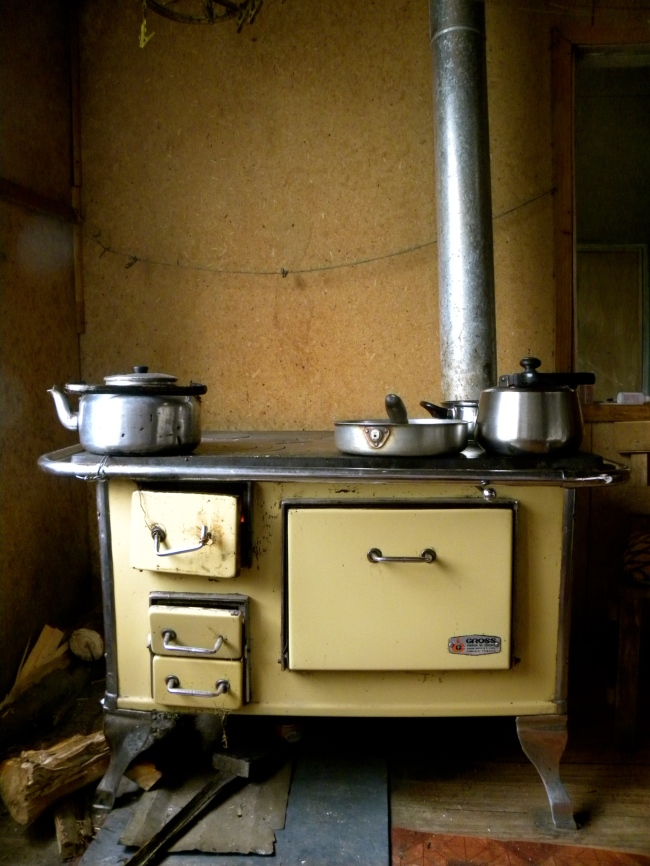
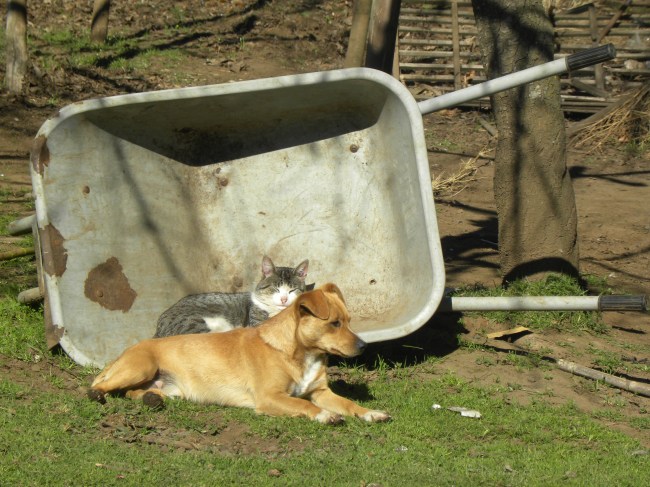

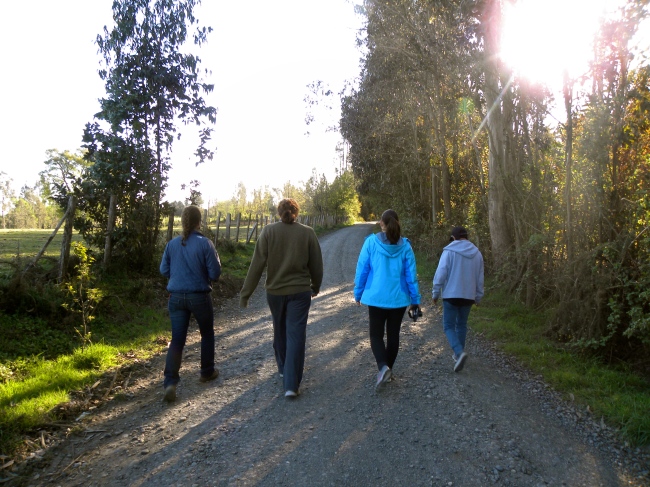
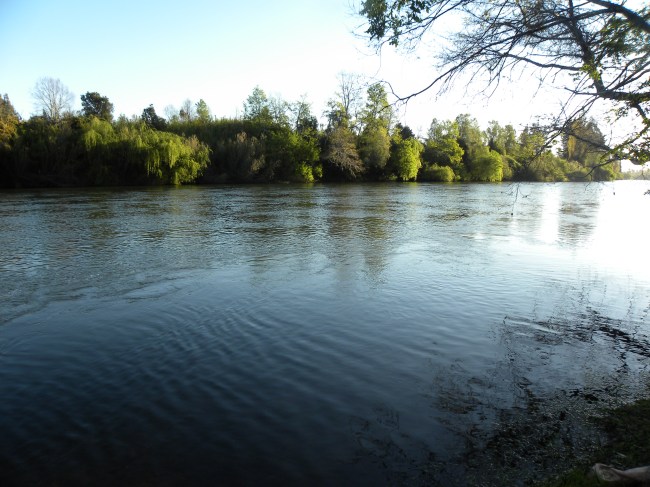
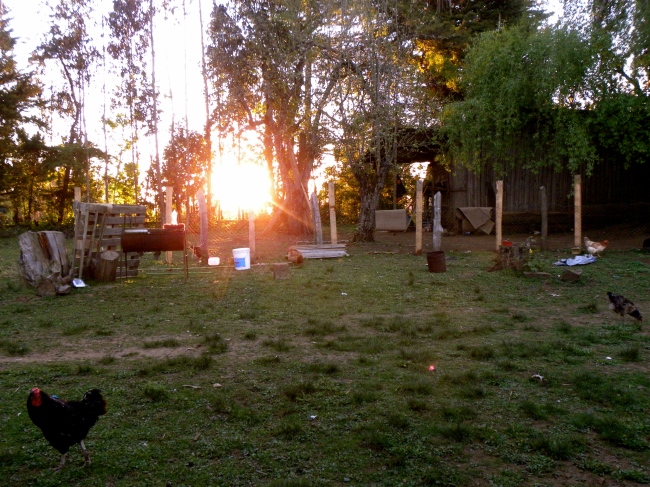

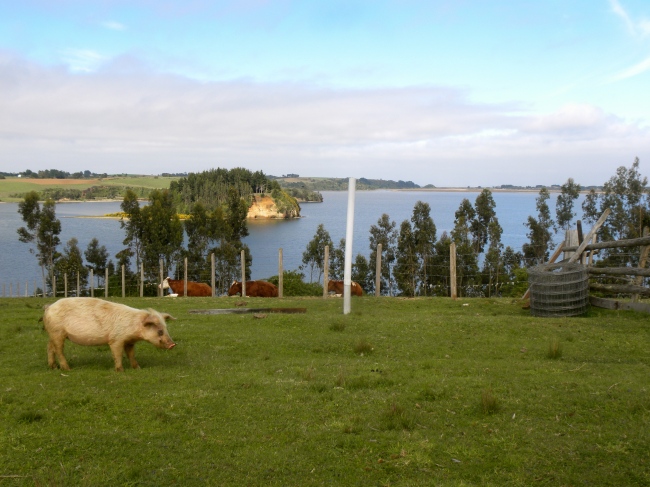
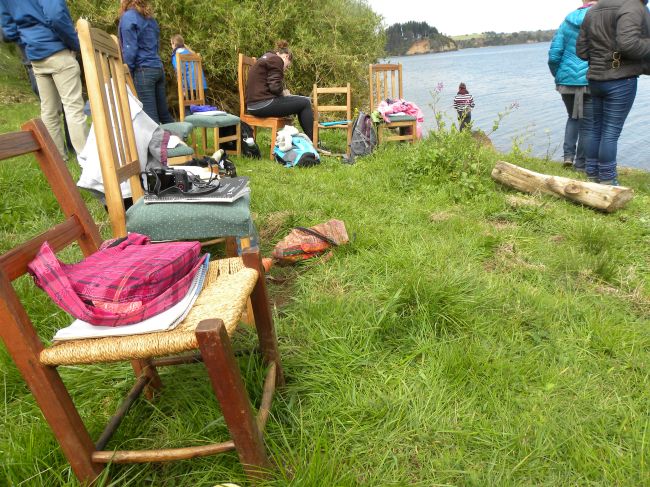
[…] Bread, Cheese, and Indigenous Rights: A Week in Temuco (katherineprobablygetslost.wordpress.com) […]